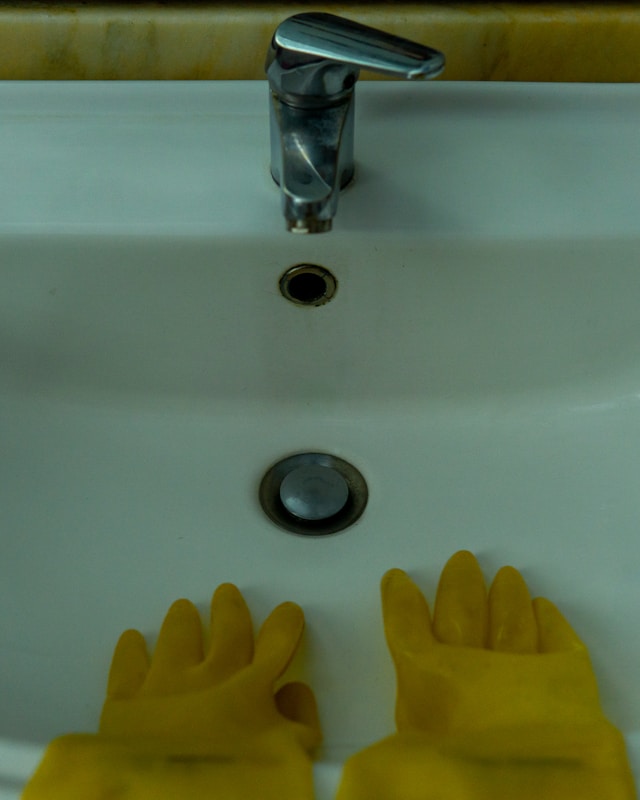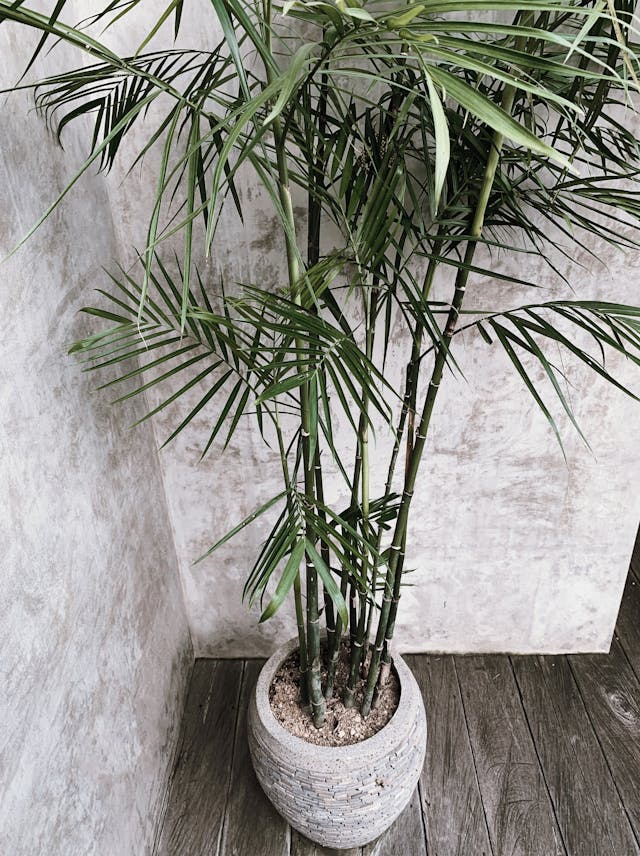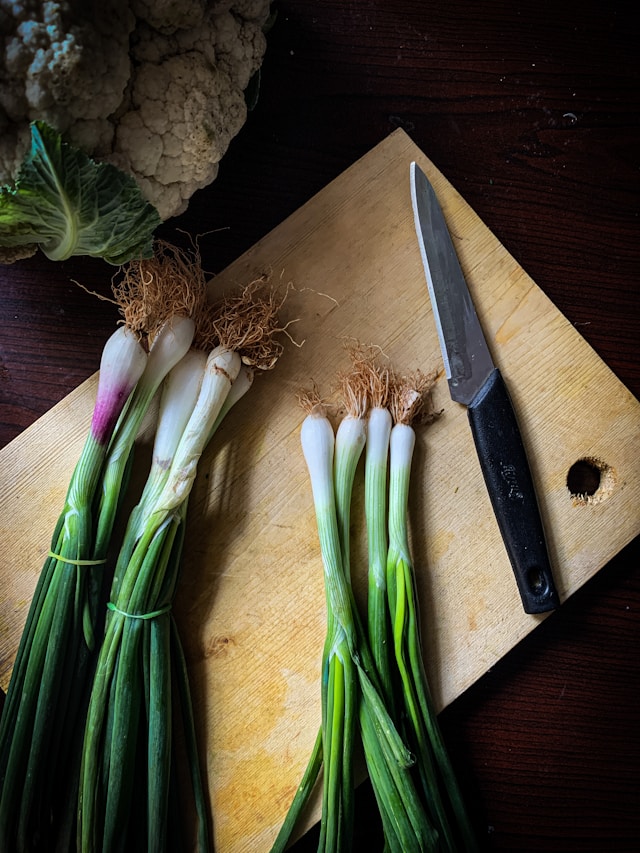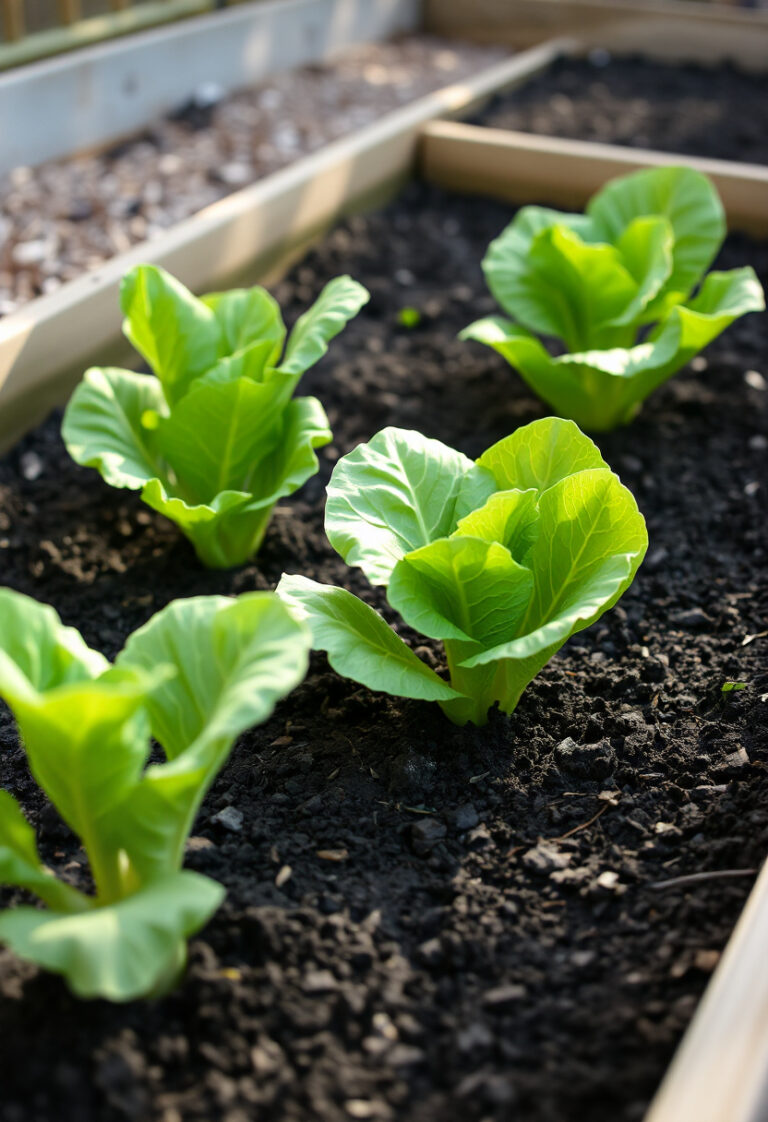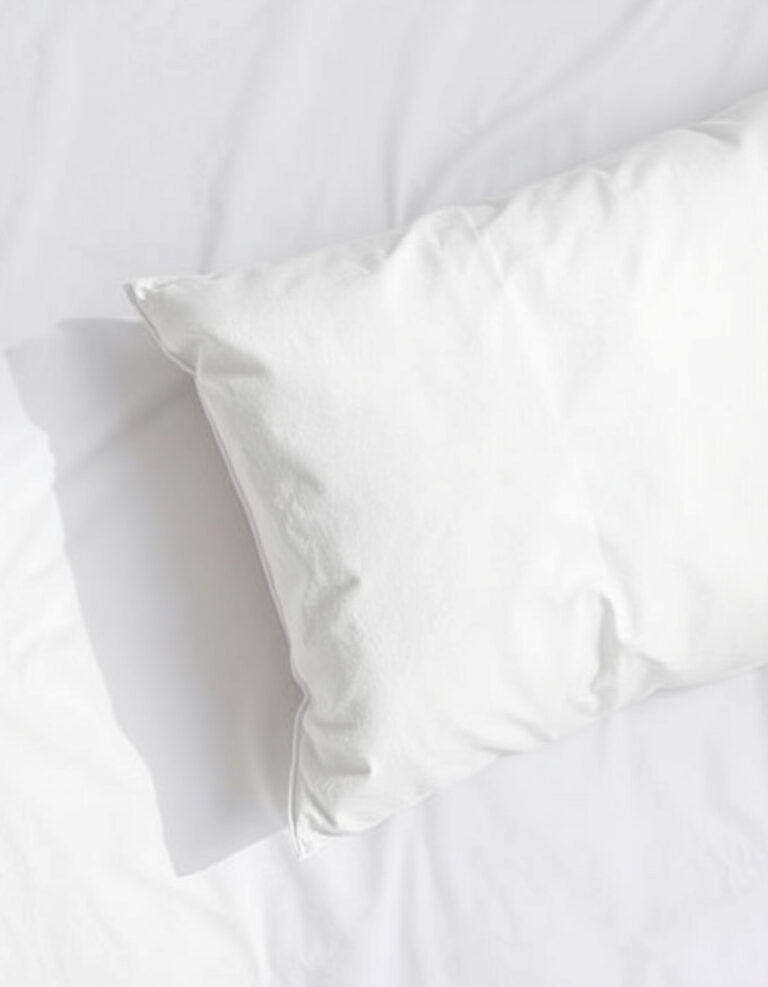Indoor plant styling has become an essential element of modern home design, offering both aesthetic appeal and health benefits. Whether you’re a seasoned plant parent or just beginning your green journey, strategic placement and thoughtful arrangement can significantly impact your living space’s appearance and functionality.
The key to successful indoor plant styling lies in understanding how to balance plant varieties, containers, and placement to create cohesive and visually appealing displays. This comprehensive guide explores ten proven techniques to help you incorporate greenery into your home decor.
Indoor Plant Styling Ideas

1. Create Vertical Plant Displays
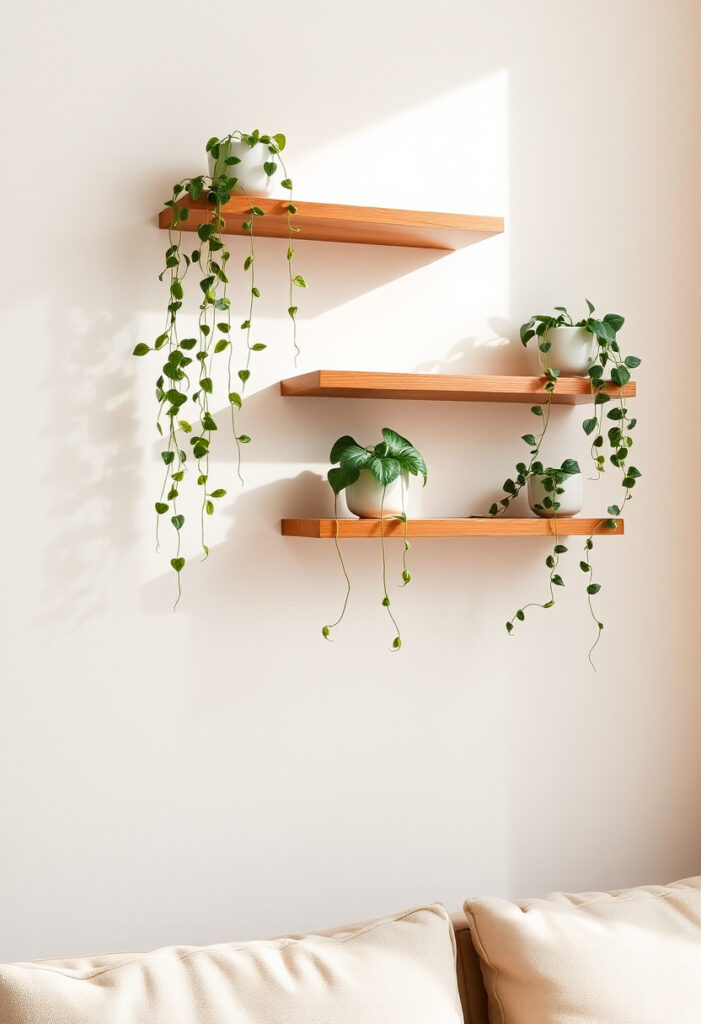
Vertical plant arrangements maximize your growing space while adding height and dimension to any room. Wall-mounted planters, hanging macrame holders, and tiered plant stands allow you to display multiple plants without consuming valuable floor space.
Consider installing floating shelves at varying heights to create a cascading effect with trailing plants like pothos or string of hearts. This approach works particularly well in small apartments or rooms with limited square footage. Vertical styling also draws the eye upward, making ceilings appear higher and rooms feel more spacious.
2. Group Plants by Height and Texture
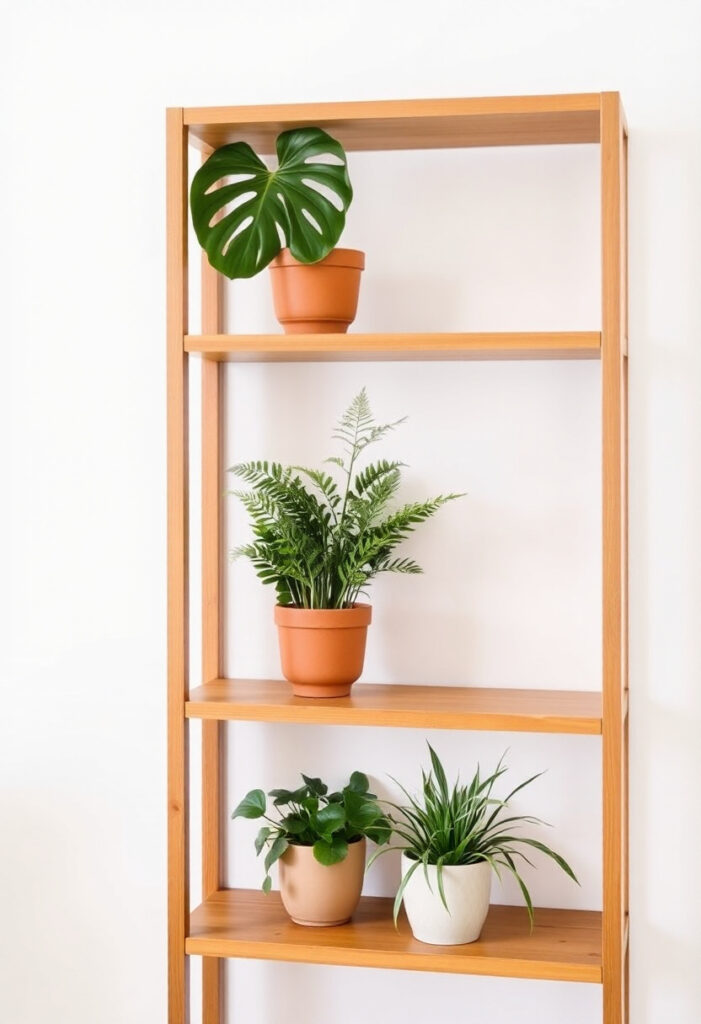
Layered plant groupings create visual interest through strategic height variations and contrasting textures. Arrange plants in odd-numbered clusters, typically groups of three or five, placing the tallest specimens in the back and shorter ones in front.
Combine plants with different leaf shapes and textures to enhance visual appeal. Pair broad-leafed plants like monstera with fine, delicate foliage such as ferns or asparagus plants. This textural contrast adds depth and prevents monotonous displays.
When grouping plants, maintain consistent watering schedules by clustering species with similar care requirements. This practical approach simplifies maintenance while ensuring all plants in the group thrive under similar conditions.
3. Use Statement Planters as Focal Points
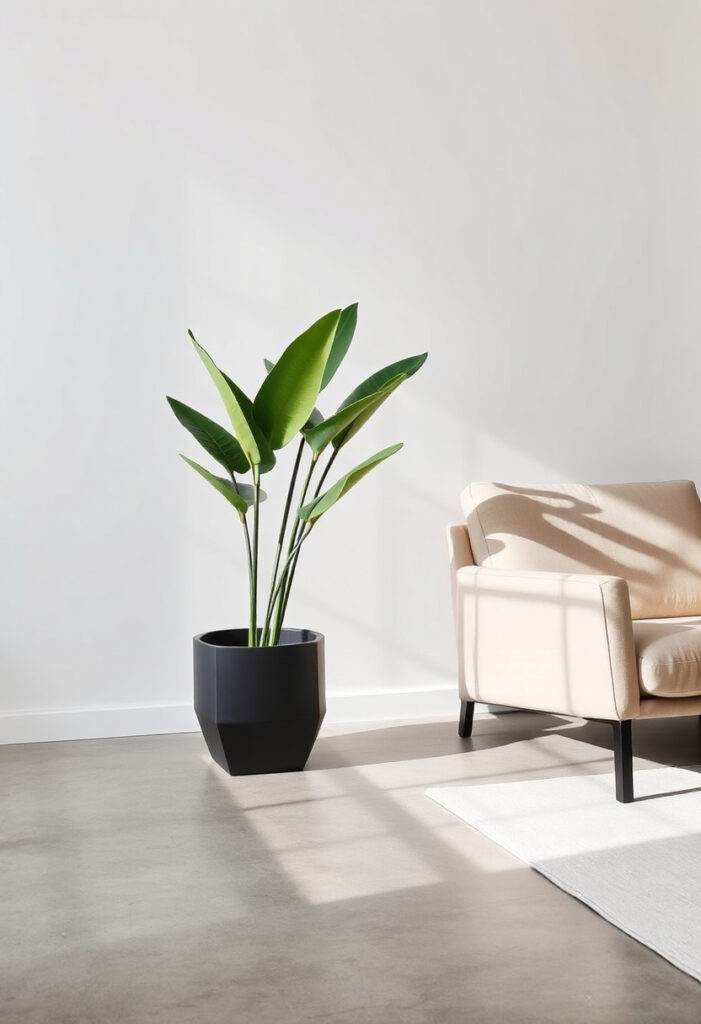
Bold container choices can transform ordinary plants into striking design elements. Large ceramic pots, woven baskets, or modern geometric planters can enhance your decor.
Choose planters that contrast with your wall colors to make plants stand out, or select neutral tones that blend seamlessly with your color scheme. Statement containers work best with simpler plant varieties, allowing the planter design to shine without competing for attention.
Consider the room’s overall aesthetic when selecting planters. Industrial spaces benefit from concrete or metal containers, while traditional homes pair well with ceramic or terracotta options.
4. Incorporate Plants Into Bookshelves and Storage
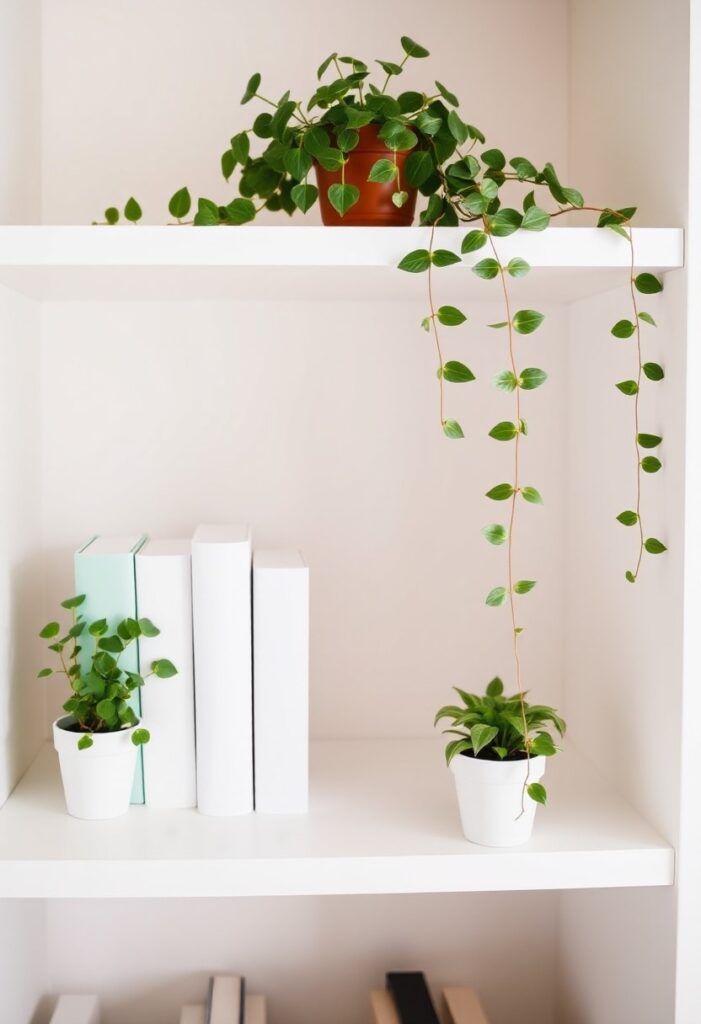
Integrated plant styling involves weaving greenery throughout existing furniture and storage solutions. Bookshelves provide excellent opportunities to display small to medium-sized plants between books and decorative objects.
Trail hanging plants from upper shelves to create natural curtains of greenery. Snake plants or ZZ plants work well on lower shelves due to their tolerance for lower light conditions typically found in interior shelving units.
This integration technique helps distribute plants throughout the room rather than clustering them in single locations, creating a more balanced and natural appearance.
5. Design Corner Plant Arrangements
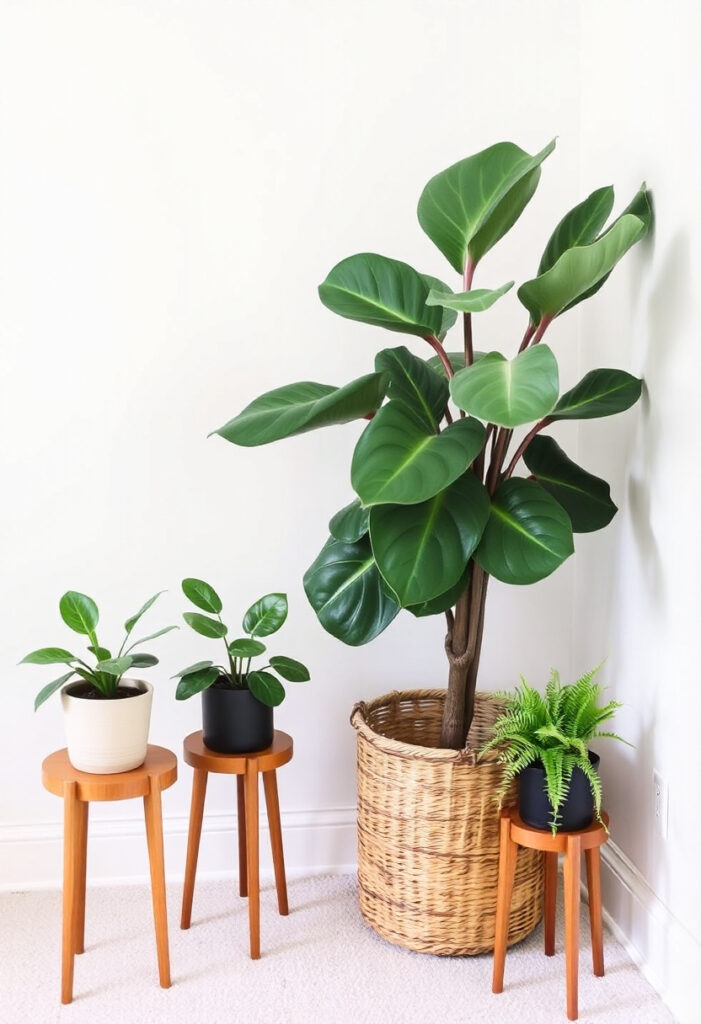
Corner styling transforms neglected spaces into green focal points using the room’s natural architecture. Corners naturally frame plant displays, making them appear more intentional and polished.
Place a large floor plant as an anchor piece, then surround it with smaller plants at varying heights using plant stands or decorative stools. This layered approach creates depth and prevents corners from appearing flat or boring.
Consider lighting requirements when styling corners, as these areas often receive less natural light. Choose low-light tolerant plants or supplement with grow lights to ensure healthy growth.
6. Create Bathroom Plant Displays
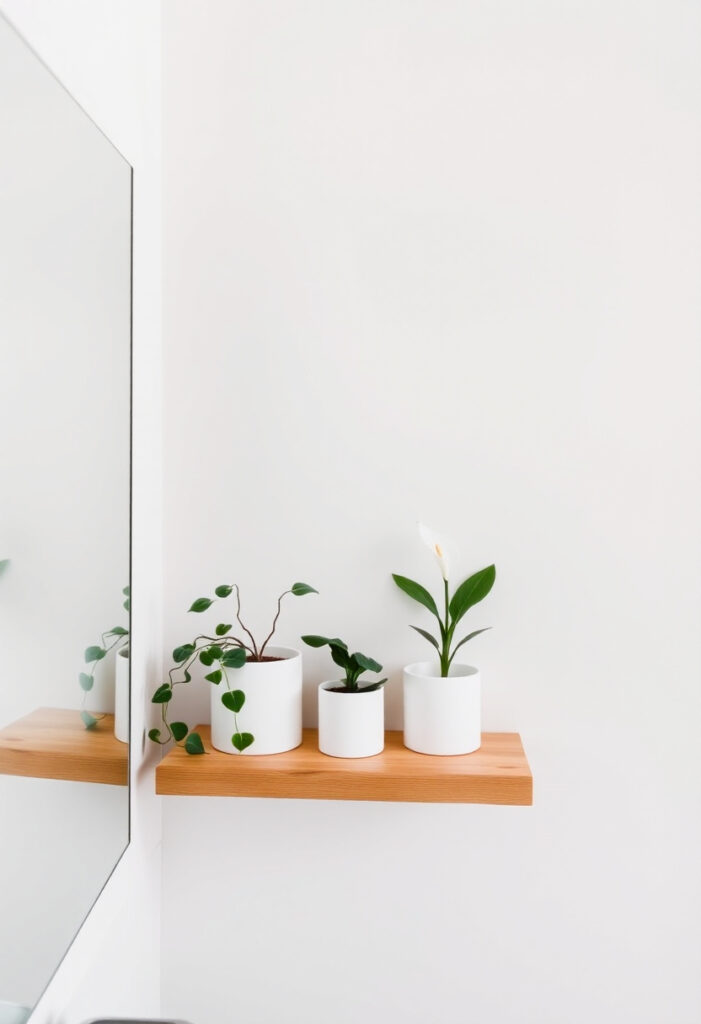
Bathroom plant styling takes advantage of naturally higher humidity levels that many tropical plants prefer. Steam from showers creates an ideal microclimate for humidity-loving species like ferns, orchids, and air plants.
Place plants on windowsills, floating shelves, or hanging planters where they can benefit from moisture without being directly splashed. Bathroom greenery softens hard surfaces like tile and glass while improving air quality in enclosed spaces.
Ensure adequate drainage in bathroom planters to prevent water accumulation, which can lead to root rot despite the humid environment.
7. Style Plants on Different Levels
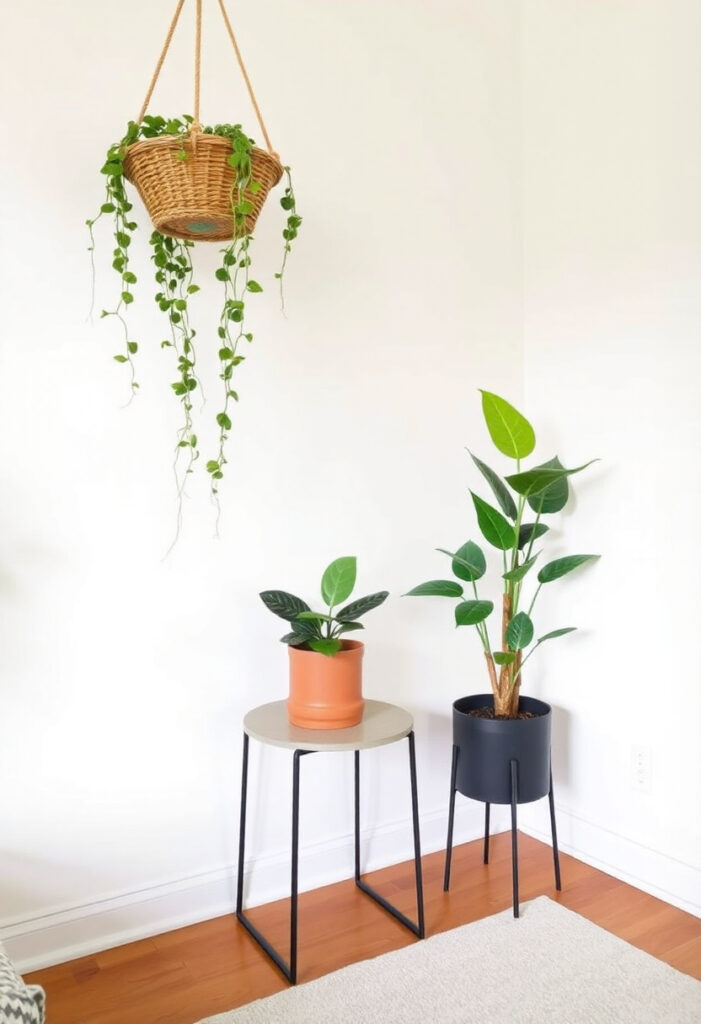
Multi-level plant displays create dynamic visual flow throughout your space. Use plant stands, side tables, floor placements, and hanging options to establish plants at eye level, knee level, and overhead positions.
This three-dimensional approach guides the eye around the room and creates a more immersive green environment. Vary the heights significantly rather than placing plants at similar levels to maximize visual impact.
Consider the viewing angles from different seating areas when positioning plants at various levels. Ensure that plant placements don’t obstruct sight lines or conversation areas.
8. Utilize Window Areas Effectively

Window plant styling maximizes natural light exposure while creating attractive displays visible from both inside and outside your home. South-facing windows provide bright, indirect light suitable for most houseplants, while north-facing windows work better for low-light species.
Create window plant shelves using tension rods and glass shelves, or arrange plants on existing window sills at staggered heights. This technique filters natural light beautifully while providing plants with optimal growing conditions.
Be mindful of temperature fluctuations near windows, especially during extreme weather. Move sensitive plants away from windows during particularly hot or cold periods.
9. Design Tabletop Plant Arrangements
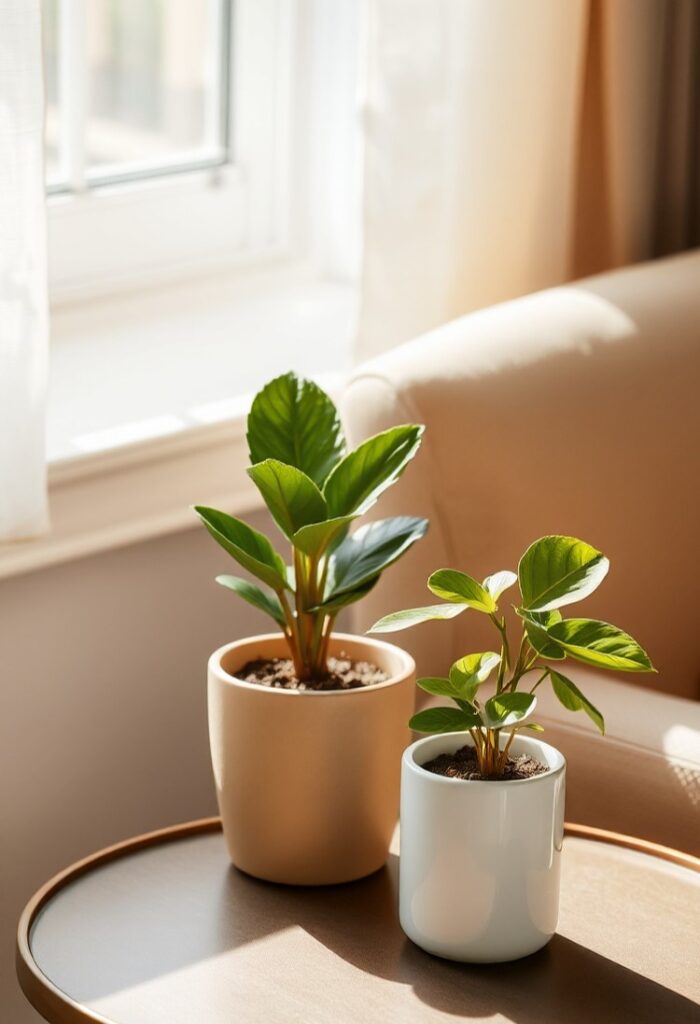
Tabletop plant styling transforms dining tables, coffee tables, and side tables into green focal points using carefully selected small to medium plants. This approach brings greenery to eye level where it can be appreciated up close during daily activities.
Create balanced arrangements using shallow planters or decorative trays that accommodate multiple small plants without overwhelming the table surface. Consider the table’s primary function when selecting plants – dining tables need arrangements that don’t obstruct conversation, while coffee tables can support slightly larger displays.
Use varying heights within tabletop arrangements by incorporating small plant stands or stacking books under some planters. This layered approach prevents flat, monotonous displays while keeping everything within the appropriate scale for furniture surfaces.
10. Mix Plant Sizes and Species Strategically
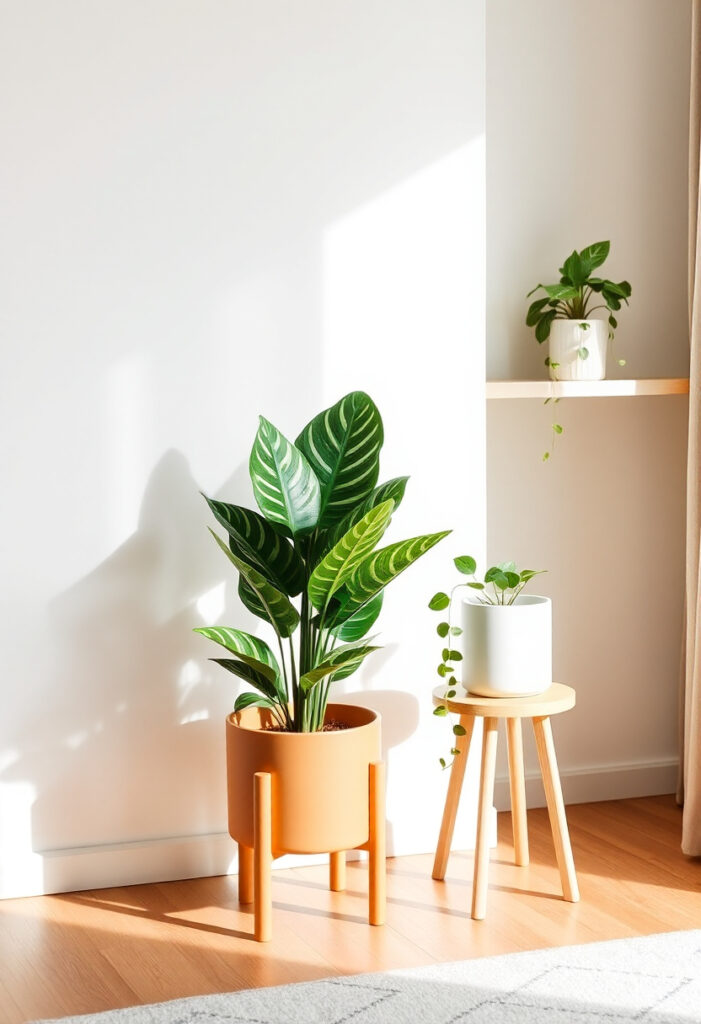
Diverse plant combinations prevent monotonous displays by incorporating various sizes, shapes, and growth patterns. Combine upright plants with trailing varieties, broad leaves with narrow foliage, and different shades of green to create visually rich arrangements.
Start with one or two anchor plants (larger specimens), then add medium-sized plants for body, and finish with small plants or trailing varieties for detail and movement. This scaling principle applies whether you’re styling a single corner or an entire room.
Research plant compatibility when grouping different species, ensuring similar light and watering requirements to simplify care routines.
Tips for Successful Indoor Plant Styling
Successful plant styling requires attention to both aesthetic and practical considerations. Always prioritize plant health over appearance, as healthy plants naturally look more attractive and contribute better to your home environment.
Consider maintenance requirements when planning plant placements. Group plants with similar watering schedules together, and ensure you can easily access all plants for regular care.
Lighting assessment should guide all plant placement decisions. Observe how light moves through your space throughout the day and match plants to appropriate light levels.
Start small and gradually add plants as you gain confidence and experience. Indoor plant styling improves with practice, and it’s easier to add plants than to manage an overwhelming collection.
Maintenance Considerations
Regular maintenance keeps your plant styling looking fresh and healthy. Dust leaves weekly to maintain their natural shine and improve photosynthesis efficiency. Rotate plants periodically to ensure even growth and prevent them from leaning toward light sources.
Monitor plant growth and be prepared to repot or relocate plants as they outgrow their designated spaces. Pruning and trimming maintain desired shapes and sizes while promoting healthy growth.
Establish a consistent watering and feeding schedule based on seasonal changes and individual plant requirements. Healthy plants form the foundation of successful styling efforts.
Questions & Answers
Q: How many plants should I have in one room? A: There’s no strict rule, but start with 3-5 plants in medium-sized rooms and adjust based on available space, light conditions, and your ability to maintain them. Too many plants can overwhelm a space, while too few may not create the desired impact.
Q: What plants work best for beginners interested in indoor plant styling? A: Snake plants, pothos, ZZ plants, and rubber trees are excellent choices for beginners. These species tolerate various light conditions, forgive irregular watering, and provide strong structural elements for styling arrangements.
Q: How do I choose the right planter size for my plants? A: Select planters that are 1-2 inches larger in diameter than the plant’s current pot. The planter should have drainage holes or a drainage layer to prevent waterlogging. Consider the plant’s mature size when making long-term planter investments.
Q: Can I style plants in rooms with no natural light? A: Yes, but you’ll need to use low-light tolerant plants like snake plants, ZZ plants, or Chinese evergreens, or supplement with grow lights. LED grow lights can support most houseplants and allow for styling flexibility in darker spaces.
Q: How often should I rearrange my plant styling? A: Rearrange plants seasonally or when they outgrow their spaces. However, avoid moving plants too frequently, as they need time to adapt to their environment. Make small adjustments rather than complete overhauls.
Q: What’s the best way to style plants in small apartments? A: Focus on vertical space using wall-mounted planters, hanging baskets, and tall plant stands. Choose compact plants and utilize multi-functional furniture with built-in plant displays. Corner arrangements and window styling maximize impact in limited square footage.
Q: How do I prevent my plant styling from looking cluttered? A: Maintain adequate spacing between plants, use consistent planter styles or colors, and follow the rule of odd-numbered groupings. Avoid placing plants at the same height, and ensure each plant has room to grow without crowding neighbors.
Q: Should I match my planters to my home decor? A: Planters should complement your decor without being identical matches. Choose colors and materials that harmonize with your existing palette, or use neutral planters that work with any decor changes. Consistency in planter style creates cohesion across different rooms.

